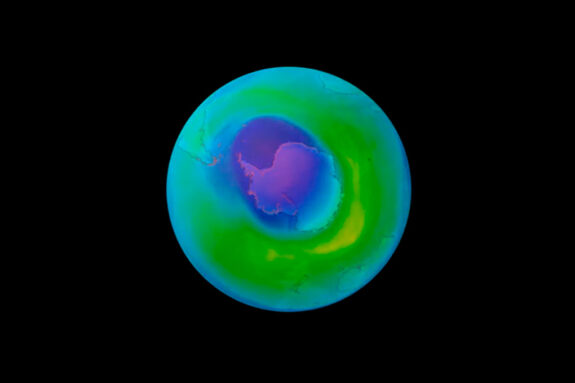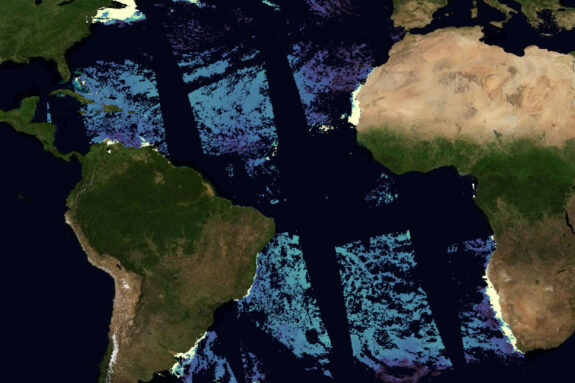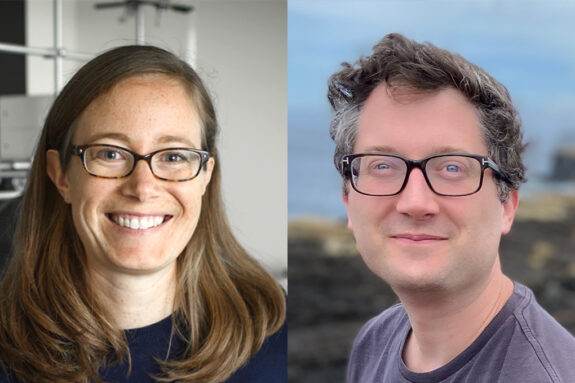EAPS appoints Gaia Stucky de Quay and Richard Teague as new faculty

Richard Teague’s research examines how planets are born and the environment within protoplanetary disks, and Gaia Stucky de Quay’s research investigates how planetary surfaces form, evolve, and decay. Individual photos courtesy of the researchers
Gaia Stucky de Quay and Richard Teague will join the MIT Department of Earth, Atmospheric and Planetary Sciences (EAPS) as assistant professors in planetary science. Her appointment is effective January 16, 2023, and his is July 1, 2022.
Gaia Stucky de Quay’s research focuses on exploring topographic signals and landscape evolution, in order to both deconvolve and quantify primary driving forces such as tectonics, climate, and local geological processes across various timescales and planetary surfaces, whether on Earth, Mars, or beyond. Her work is guided by several interrelated questions: What drives landscape evolution? Are fluvial systems a reliable proxy for climate? Can we use the relationships we see on Earth to decipher the ancient Mars hydroclimate? Can we go a step further and shed light on enigmatic surface processes we see on Titan or other icy moons?
Stucky de Quay’s current work features three main branches. She’s investigating the morphology of Martian valleys and lakes, and how these may be used to constrain the perplexing ancient climate of Mars. In particular, these open and closed paleo-basins are excellent tools for investigating the ancient inventory of water on Mars. Another avenue of interest is volcanic islands, particularly in the Atlantic Ocean. These basaltic terrains are fantastic natural labs for studying the myriad processes that shape surfaces, via river erosion, uplift, lithology, and variable climate, among others. They can help researchers like Stucky de Quay answer longstanding questions about how precipitation is linked to river incision, what role lithology plays, and how uplift from dynamic support affects these river systems. Additionally, these types of islands can be analogs for other planetary surfaces such as Mars — quantifying physical and chemical erosion in these volcanic terrains is important for understanding the role of water on other planets. Stucky de Quay is also interested in applying her expertise to understanding how the surfaces of icy moons evolve and how geomorphic features can be used to derive unknown processes, such as groundwater in Titan or internal heat flux on Enceladus.
She sees that two of the greatest challenges today’s geoscientists face are (1) addressing impending climate change and (2) paving the way for planetary exploration. An improved quantitative understanding of surface processes around us is fundamental to inform relationships between the litho-, hydro-, atmo-, and bio-spheres. To investigate these subjects, she integrates fieldwork, lab work, modelling, and remote sensing. “My philosophy centers on finding compelling geological sites—either remotely or in situ—with significant potential to bridge knowledge gaps, and employing a wide variety of multi-disciplinary techniques to generate novel, impactful science results,” she says. In the long-term, Stucky de Quay will work to understand the driving forces behind these changes, whether they are climatic or tectonic in origin.
Stucky de Quay is currently a postdoc at the University of Texas at Austin and will soon move to Harvard University to conduct research as a Daly Postdoctoral Fellow until her appointment at EAPS. Before this, Stucky de Quay earned her master’s degree from the University College of London and a PhD from Imperial College London. She went on to a visiting studentship at the University of Chicago.
After she arrives at MIT, Stucky de Quay hopes to “build a diverse and integrative research program that gravitates towards my expertise in quantitative geomorphic analyses across both the globe and into the depths the Solar System.” Stucky de Quay’s research will inform the work of researchers in many fields — not only hydrologists, geomorphologists, and NASA mission scientists, but ecologists interested in species distribution and evolution, volcanologists assessing risks from lava flows, lahars, or water-magma interactions, and communities seeking a better understanding of hazards related to coastal erosion, flooding, and landslides.
Richard Teague classifies himself as an observational astronomer, who looks to understand the course of planetary formation as it happens by examining the initial conditions and environment within protoplanetary disks. Further, he looks at the earliest stages of a planet’s life, including witnessing the delivery of atmospheres to newly-formed giant planets, to paint the most comprehensive picture of planet formation to date.
His work is driven by a few fundamental questions. Where and when does planet formation take place; what are the materials involved? What processes drive planet formation? Is the process by which our solar system’s planets formed universal or unique?
“This is the only field in astronomy where we can go beyond remote sensing, and actually perform in situ experiments,” Teague says. “Detailing the physical conditions across the environments in which planetary systems form is providing essential context for such in situ measurements. For example, by contrasting the magnetic fields present during the protoplanetary disk phase to meteoritic measurements of the primordial magnetic fields present during the formation of the solar system (with measurements undertaken in Professor Weiss’ Paleomagnetism Laboratory) we can unravel how magnetic fields can shape the architecture of the resulting planetary systems.”
In order to obtain these insights, Teague uses some of the largest telescopes in the world, such as the Atacama Large (sub-)Milimeter Array (ALMA) and the European Southern Observatory’s Very Large Telescope (VLT) to probe the distribution of planet-forming gas and dust, which make up protoplanetary disks. In parallel, these observations yield exceptionally precise maps of the velocity structure of the gas, allowing Teague to identify the presence of still-forming planets through the distinctive flow patterns that they drive.
Working with high-precision spectral line data allows Teague to: 1) detect and characterize planets immediately after their formation, those still embedded in their natal disks and the youngest examples of planets we can find; 2) inventory the material available for building planetary systems, tracing the delivery of it to sites of active planet formation in a protoplanetary disk, where it is accreted to form the atmosphere of these planets; and 3) map the physical and chemical structure of the planet formation environment in three dimensions, clarifying which physical processes are regulating the formation of the planet and/or the moon, and dictate their subsequent evolution.
Teague is currently a Submillimeter Array Fellow at the Harvard-Smithsonian Center for Astrophysics. Before this, he held postdoctoral appointments at the University of Michigan and the Max-Planck-Institute for Astronomy. Teague earned his master’s degree from the University of Edinburgh and PhD from the Max-Planck-Institute for Astronomy.
When Teague begins his appointment at MIT, he hopes to build a far-reaching research group that focuses on answering the fundamental questions about the origins of planetary systems. “Tackling these questions using a range of techniques — from the acquisition and analysis of astronomical observations from world-class observatories, to the development of the next generation numerical simulations of planet formation — is only part of the process.
“I would like to be able to integrate these findings with the ongoing EAPS research, related to mature planetary systems,” says Teague. “This will allow us to understand the origin of our own solar system within the plethora of mechanisms and materials possible. Further, this context will help us to suss out what it takes to make a habitable planet.”


